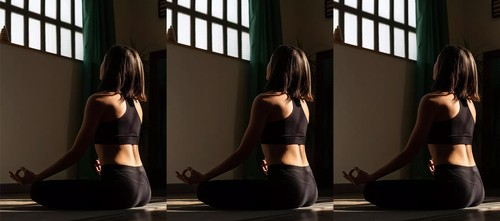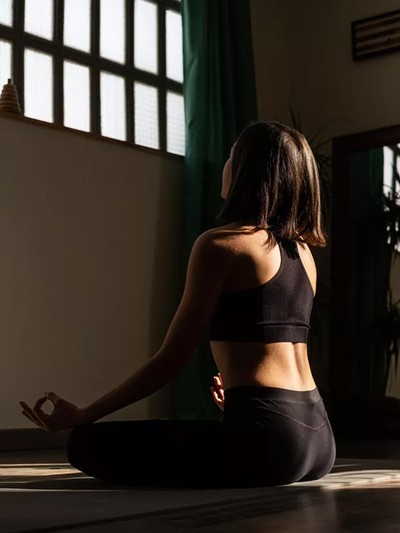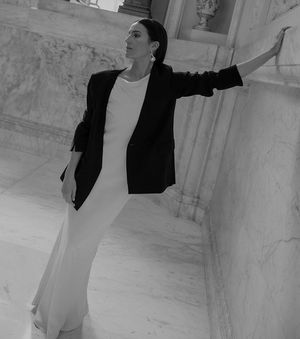

Everything You Need To Know About Breathwork
All products on this page have been selected by our editorial team, however we may make commission on some products.
What You Need To Know
“The way we breathe has a tremendous effect on our overall wellbeing, which manifests both mentally (thoughts and emotions) and physically (disease and ailments). By understanding how one can influence the other, we are then able to take control of the way we experience the world while also feeling and operating at our best.” – Dima Wadjih, certified change practitioner, executive coach & breathwork trainer, Dubai
“The more we invest in intentional breathing, the better we can regulate our emotions, enable muscle recovery, ease our digestion systems and improve the quality of sleep.” – Ghalia Almadani, corporate wellbeing consultant, yoga instructor, breathwork facilitator & sound practitioner, Saudi Arabia
“Breathwork and meditation create more space in the mind, and deep breath work is a beautiful journey that teaches us to let go of that inner resistance. When we do long breath holds, we usually release that resistance and once we do, we begin to feel how and where we've onto things in our lives. It's an act of surrendering. The less we resist, the easier things start to flow.” – Zaina Al Ghabra, health coach & yoga instructor, Kuwait
What It Can Achieve
“By controlling our breath and improving our daily breathing habits, we develop the ability to regulate our nervous system and improve our immune system. “ – Dima
“If we allow it, yoga, meditation and deep breathing help us go inwards and come face to face with ourselves (this can include our fears, our love, joy etc). I see it as hijacking the system into a state of rest and digest, a state of introspection if you will. To engage in actively de-stressing is to hijack the nervous system in a parasympathetic mode (rest and digest) which allows the body to recover and heal.” – Zaina
“The science of pranayama (breathing techniques) and various breathing methods support different parts of the body, including emotional and mental states. Breathwork is life-changing and it is truly one of life's essential skills.” – Ghalia
How To Get Started
“Breathe through your nose. While driving, walking, sitting, running, sleeping and so on… By developing the habit to breathe through your nose you begin to engage the diaphragm and deepen the breath. This engagement supports our spine health (posture) and stimulates the vagus nerve (regulation). We also improve blood circulation and oxygen delivery to the body. You can use mouth tape to help develop nasal breathing habits. Also, breathe slow. The fewer breaths you take per minute, the better. The goal is to breathe five to six breaths per minute, while the adult average is around 16 bpm.” – Dima
“Breathwork can be as simple as committing to start your day and/or end your day with five minutes of three slow inhalations and four slower exhalations (counting while breathing can help in focusing and being present).” – Ghalia
“The connection you have to your body and mind can make breathwork a healing and transformative process. If you resist, it takes longer to get there and the road is bumpier, but that's also part of some people's journey.” – Zaina
Tips & Techniques
“Start simple and do not complicate things. You do not have to be a master in breathwork to do breathwork. You could go to your closest yoga studio and try different techniques guided by experts in the field. Start somewhere no matter where you are. The breath always has your back, so invest in it.”– Ghalia
“Developing a consistent practice will help you create long lasting change. Anything good comes with patience, and it is important to release any expectation or timeline you may have towards your wellbeing goals.” – Dima
“Try something three times until you decide it's not for you. Don’t give up if you don't get something immediately, start slow and enjoy the challenge of learning (after all you're forming new neural pathways in the brain and this supports you in old age). Be patient, kind and compassionate with yourself.” – Zaina
THE PRACTITIONERS
Dima Wadjih
Dubai, UAE
Dima is a certified change practitioner, executive coach and breathwork trainer who has ten years of experience in the wellbeing space. Her teachings are based on the foundations of ancient practices and neuroscience. She has an MA in cognition where she studied the interplay between cognitive processes (such as thoughts, beliefs, perceptions, and memories), behavioural patterns, and how our thoughts and interpretations influence our emotions and actions. With a career in the technology industry, working in Microsoft and the Boston Consulting Group, she now supports organisations with change management, executive coaching and well-being workshops.
Visit DimaWadjih.com
Ghalia Almadani
Riyadh/Jeddah, Saudi Arabia
Ghalia is a corporate wellbeing consultant and wellness consultant by day and a certified passionate yoga instructor, breathwork facilitator, sound practitioner by night. With experience as a strategist and corporate wellbeing consultant for one of the Big Four consulting companies, Ghalia designs holistic wellbeing experiences so employees and leadership can incorporate wellbeing into their daily lives for better performance.
Visit Ghalia-Almadani.com
Zaina Al Ghabra
Kuwait City, Kuwait
Zaina is a health coach and yoga instructor who describes her work as ‘WHOLEiistic’ which translates to examining the human and the lifestyle as a whole and finding ways to create more balance in all areas. She assesses the human body by looking at what she describes as Primary Food and Secondary Food. Primary being our relationships, self-love, financial situation, career, home environment, while Secondary Food is the physical act of what is ingested into the body through the five senses (food, alcohol, even movies, music, and words). In her programme, Zaina draws a bridge that shows how these two areas bounce off each other.
Visit ZainaGhabra.com
DISCLAIMER: We endeavour to always credit the correct original source of every image we use. If you think a credit may be incorrect, please contact us at [email protected].

